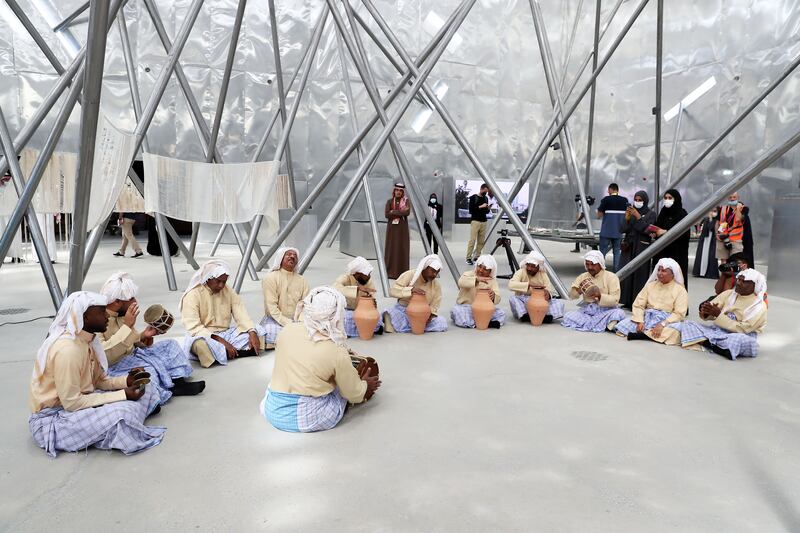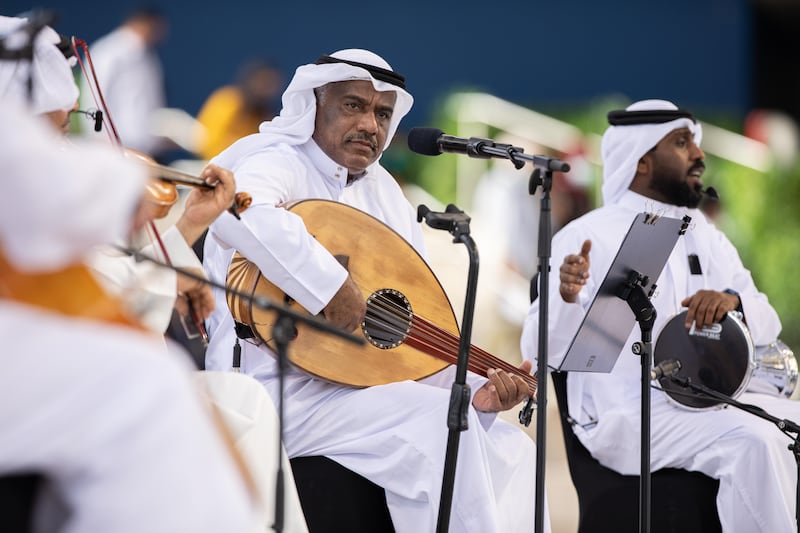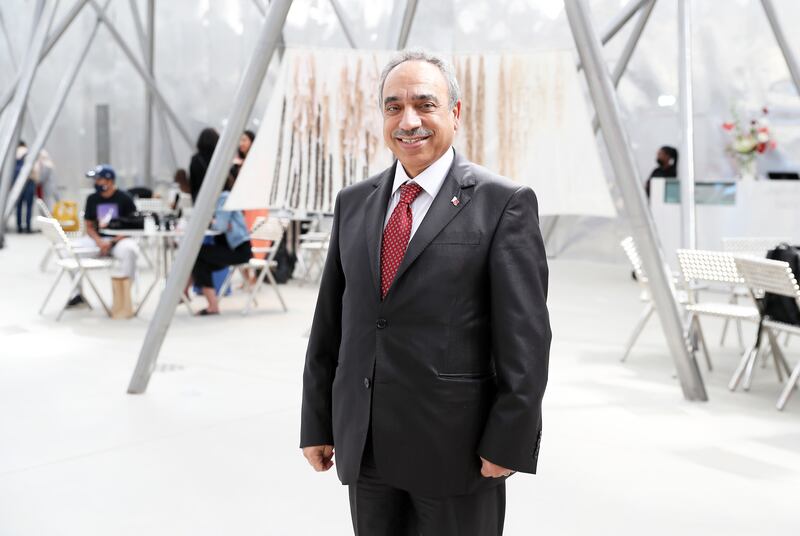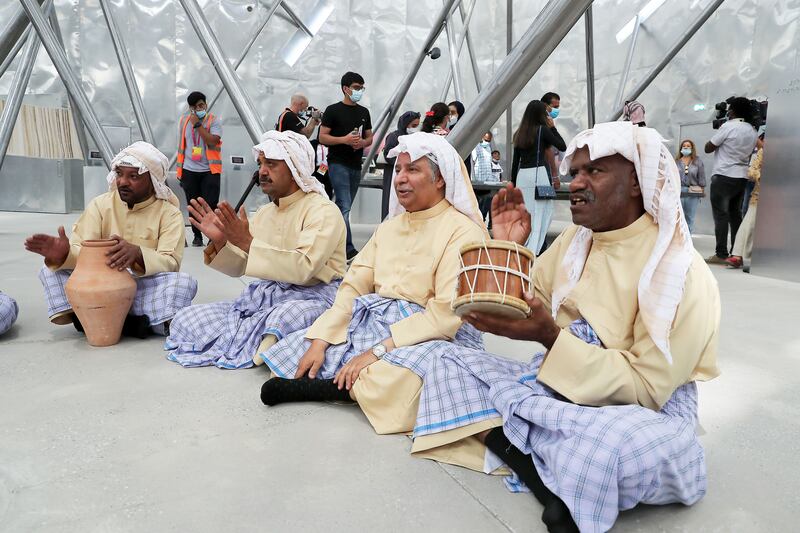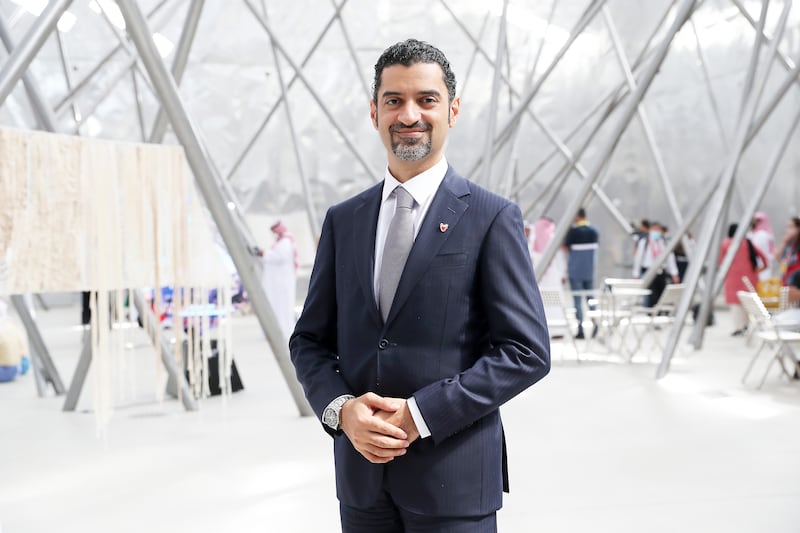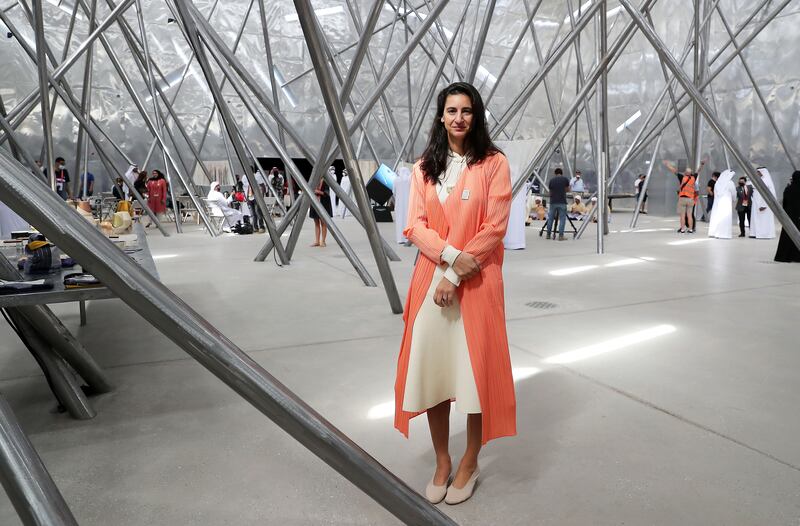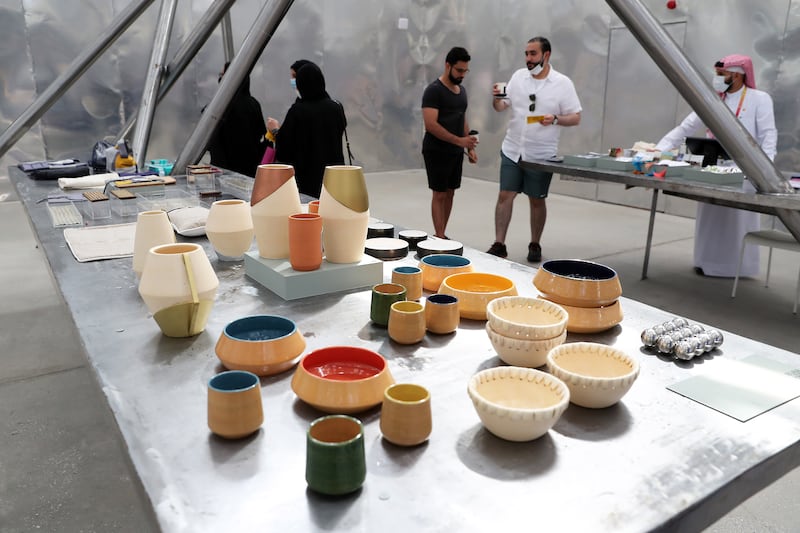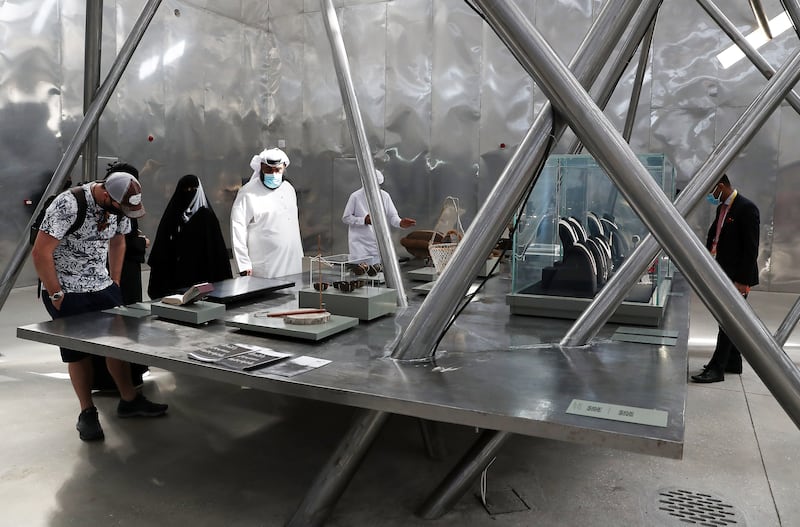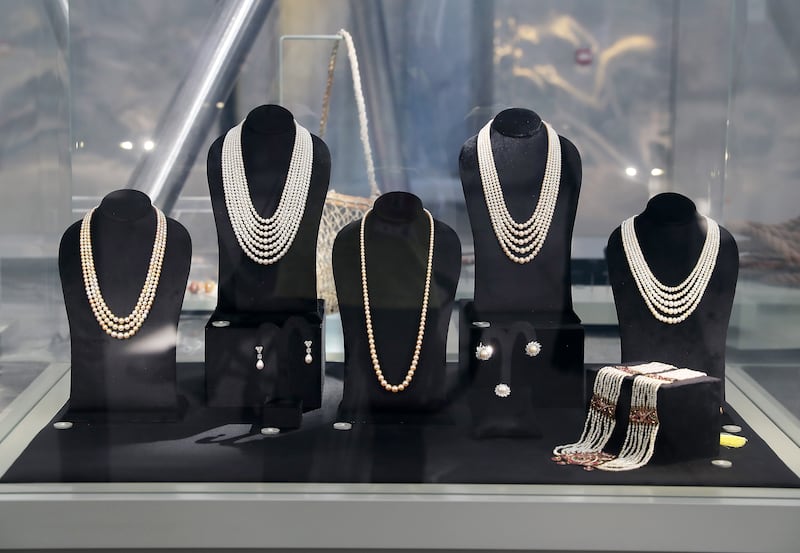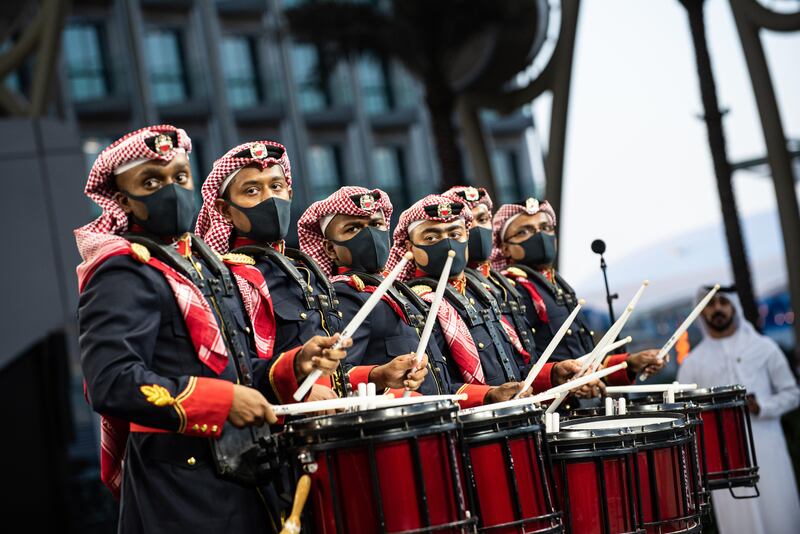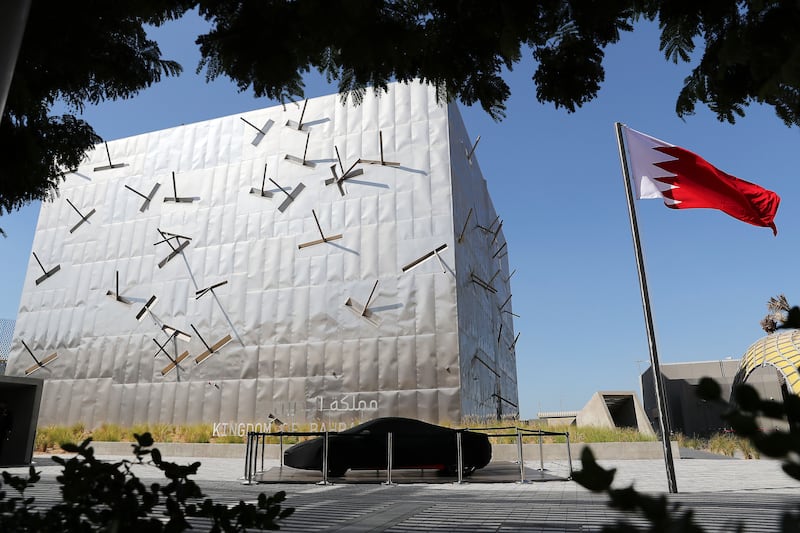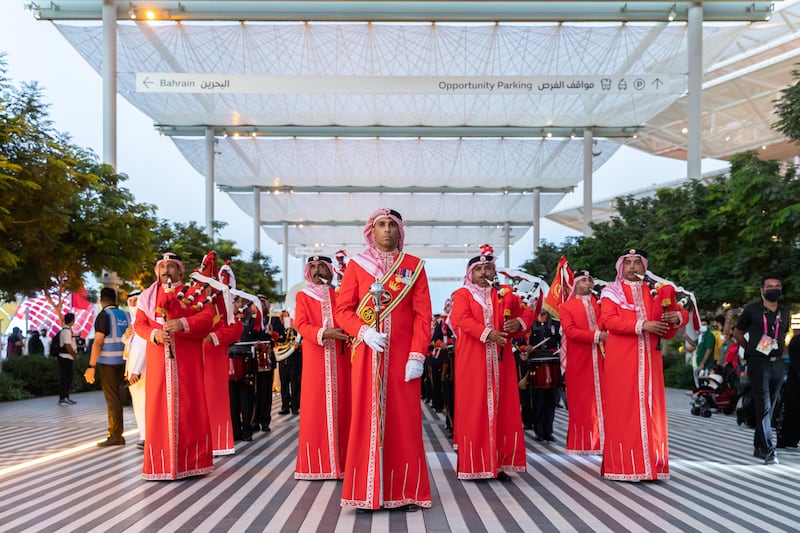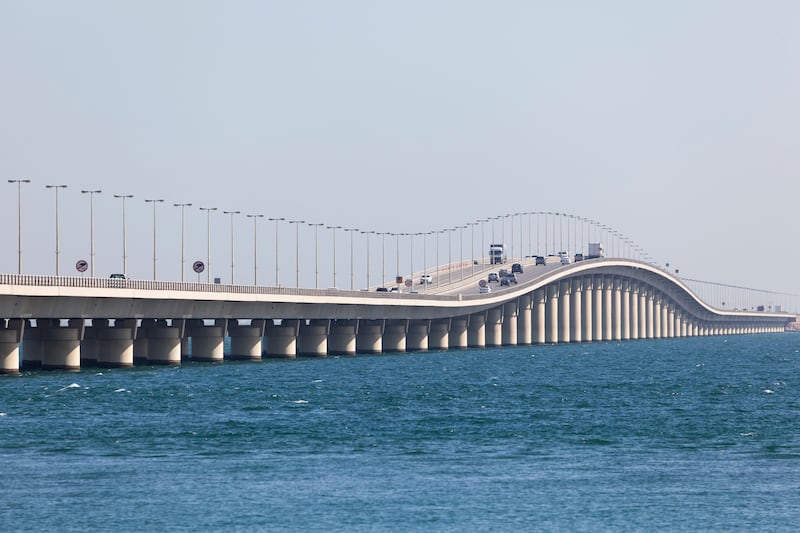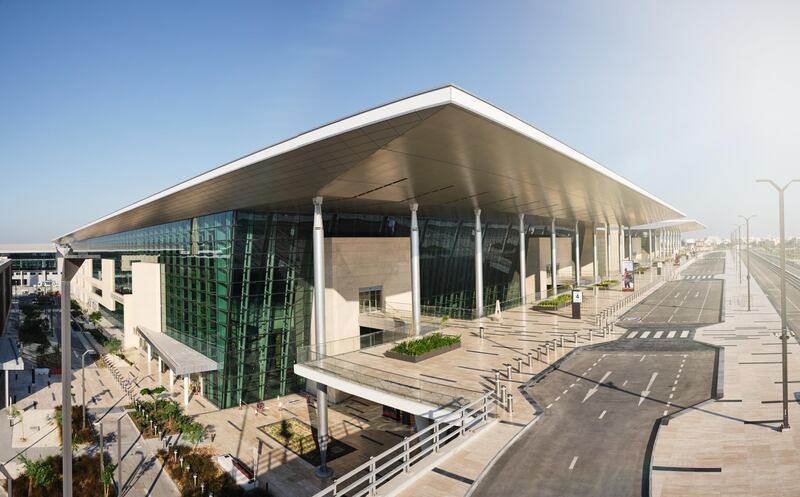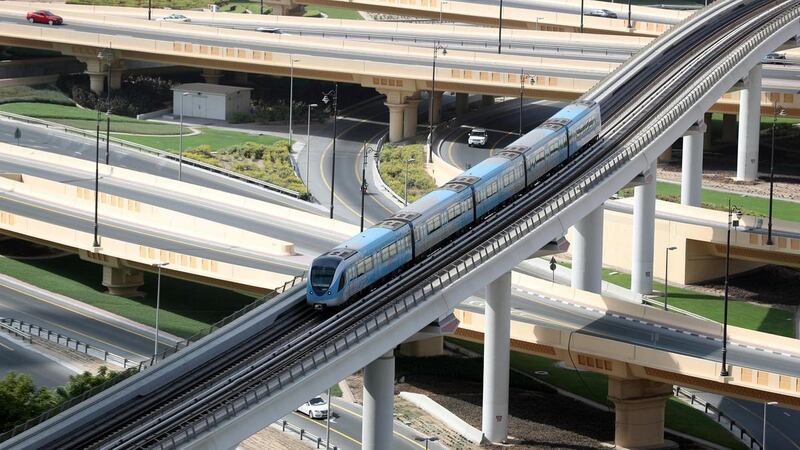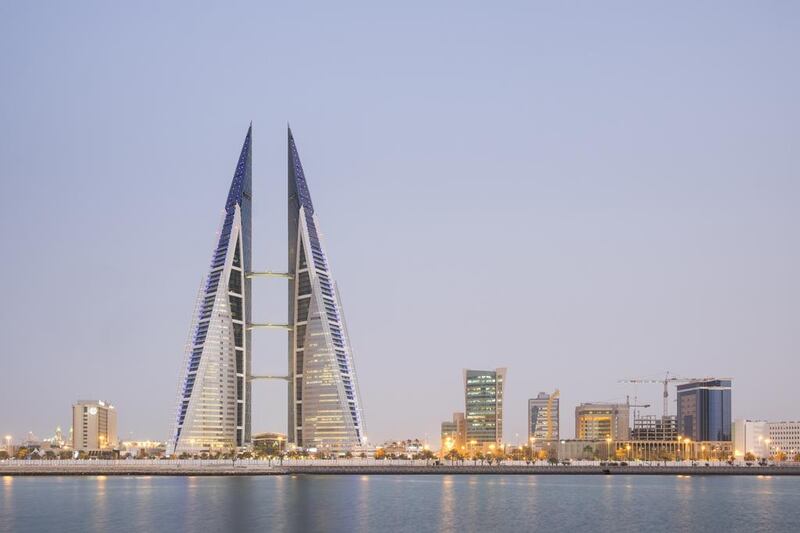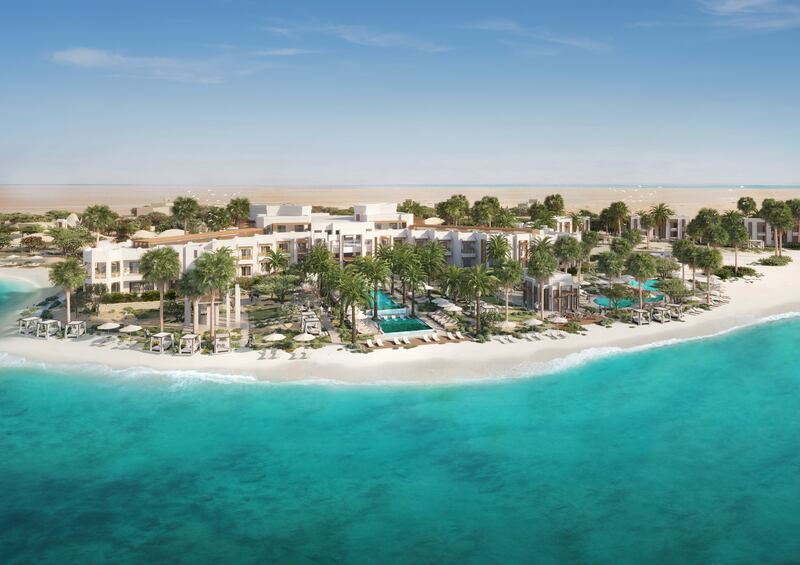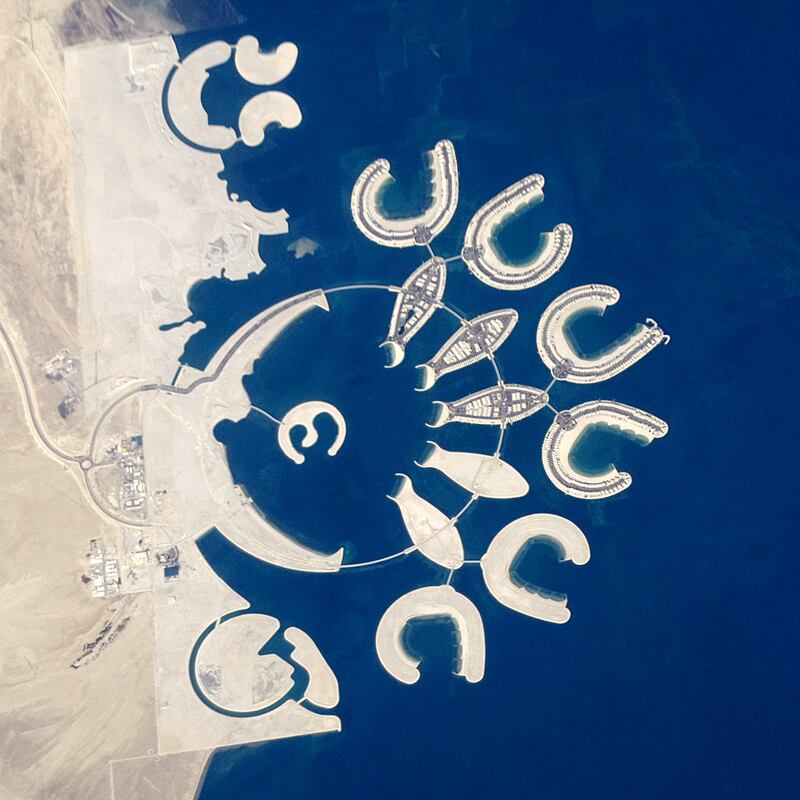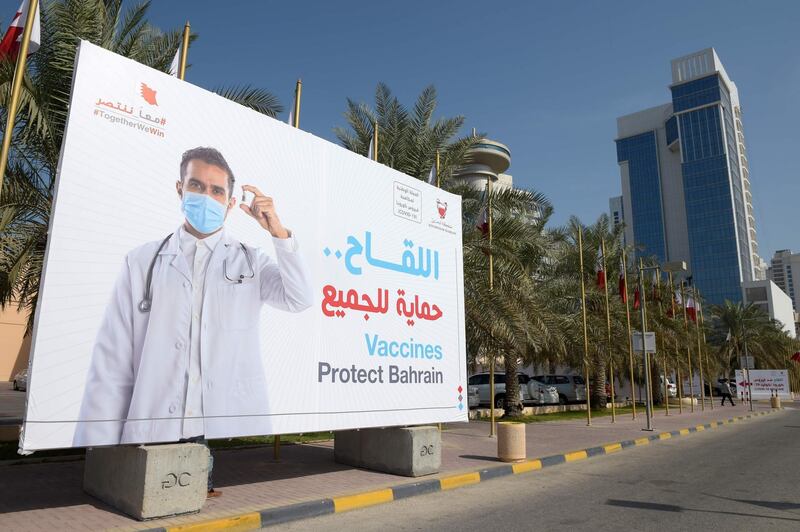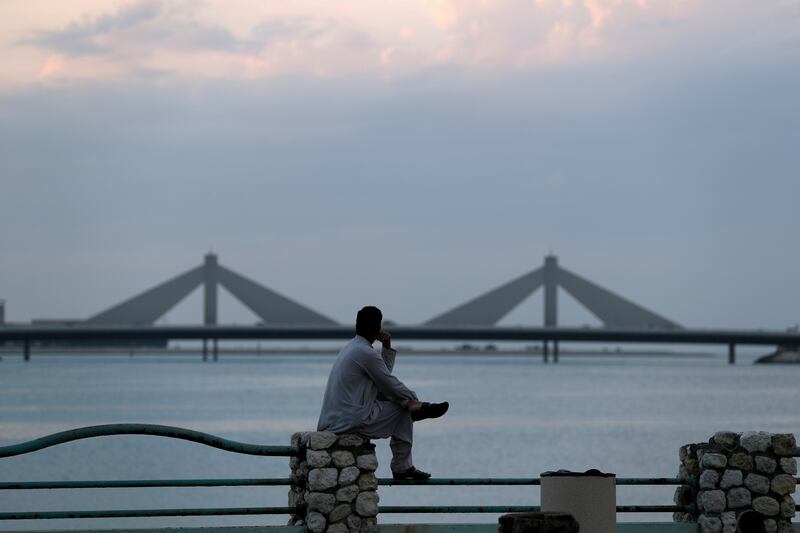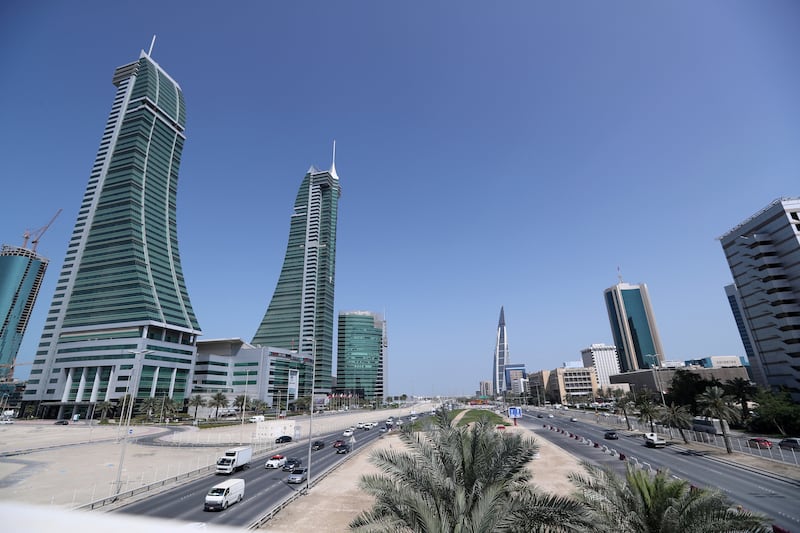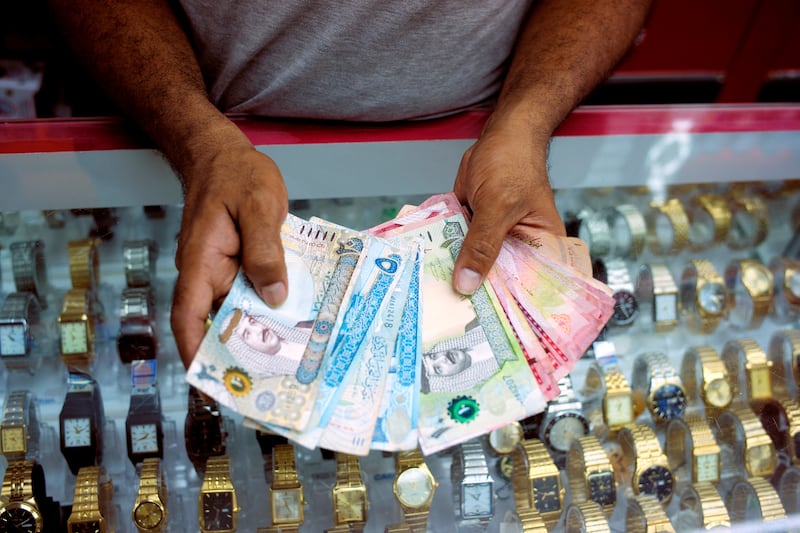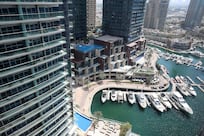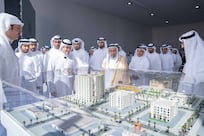Traditional folk singers welcomed visitors to the Bahrain pavilion on the occasion of its National Day at Expo 2020 Dubai.
The men filed into the space chanting quietly, before the leader singer launched into a haunting melody. Then the drummers started pulsing, until the pavilion filled with rhythmic energy.
The contrast between the traditional and the modern could not have been more stark.
The music echoed around the open space of Bahrain's pavilion – an architectural wonder of careful engineering, the walls of which were supported by 126 narrow steel poles.
Bahrain's vision for its future is similarly ambitious and is bolstered by a chunky $30 billion of new investment in infrastructure.
Traditional folk singers welcome visitors to Bahrain pavilion on its National Day

The bold economic plan was announced only three weeks ago by the government and comprises 22 projects, including one to increase the land mass of the country by more than 60 per cent.
Wael bin Nasser Al-Mubarak, Minister of Electricity and Water Affairs for Bahrain, said Expo 2020 Dubai was a good opportunity for the country to showcase its infrastructure strategy.
"This is a good window to introduce the visitor to the business opportunities in Bahrain," said Mr Al-Mubarak, who also took part in Bahrain's flagship event at Expo on the Middle East’s path to a digital economy.
Bahrain's Minister of Works, Municipalities and Urban Planning, Essam bin Abdulla Khalaf, said he was excited to be at the world's fair.
"The pavilion tells the history of Bahrain, the old professions that our grandfathers had experienced; farming, fishing and the pearl industry," he said.
"The economy has evolved from that into the oil era and now the economy of Bahrain is developing into mixed services, promoting projects and initiatives in all fields.
"The [infrastructure] plans are all promising and we keep our fingers crossed for a brighter future of Bahrain."

An exciting time for the Gulf
The Strategic Projects Plan comprises 22 projects designed to ensure Bahrain's economy continues to diversify and includes five new communities, a 29-kilometre metro line, and a 25km, four-lane causeway to Saudi Arabia.
The Economic Development Board of Bahrain is responsible for the execution of the blueprint and its chief executive, Khalid Humaidan, said the company has "never been busier".
"It's clear the interest of the world is here, the whole world is looking at us, they're evaluating our development plans, they want to be part of it," said Mr Humaidan, who has led the EDB since September 2019.
"We are fully engaged with investors from all around the world evaluating multiple opportunities. It's a very exciting time to be in the Gulf."
With so many countries in the region working on ambitious infrastructure projects, Mr Humaidan said he understood the competition for funding.
"We all have very ambitious development plans, they all work very well together and all of us will be able to carve out niches and sectors and comparable advantages and we will all benefit from this," he said.
A pioneering design

Bahrain's pavilion is designed to reflect the density of the island nation's living space, as well as its diversity.
It starts with a surprise, said Noura Al Saleh, the deputy commissioner general of the pavilion.
"You enter it through a 15-metre-long sinuous tunnel that is meant to be a point of transition between the outside world of the Expo and the inside world.
"The pavilion itself is an open space containing the cafe, the gift shop and the exhibitions."
From a structural point of view, it is the first time that a construction of this sort has been made, said Ms Al Saleh.
"It's a three-dimensional structure but the columns are extremely thin and extremely high. They're between 10 and 12 centimetres, and 24 metres in height, and they not only hold the roof but they consolidate each other.
"Every column supports itself, and the whole, which is also metaphorical of the way that we see Bahrain's population and its density where every element is important for the working of the whole."

